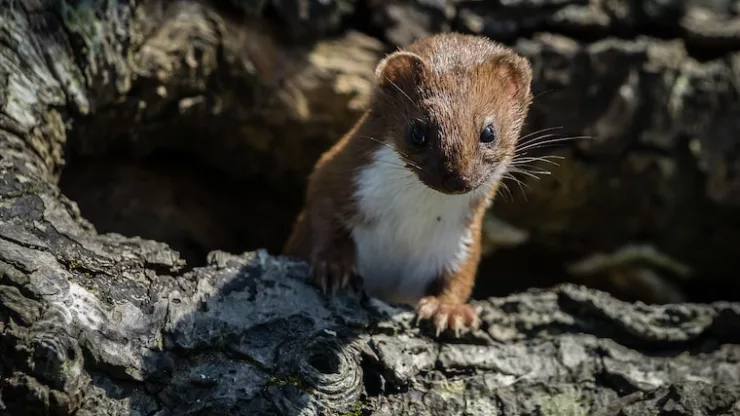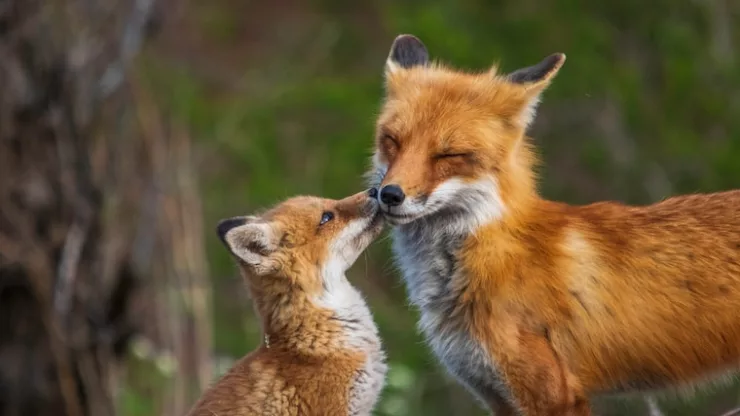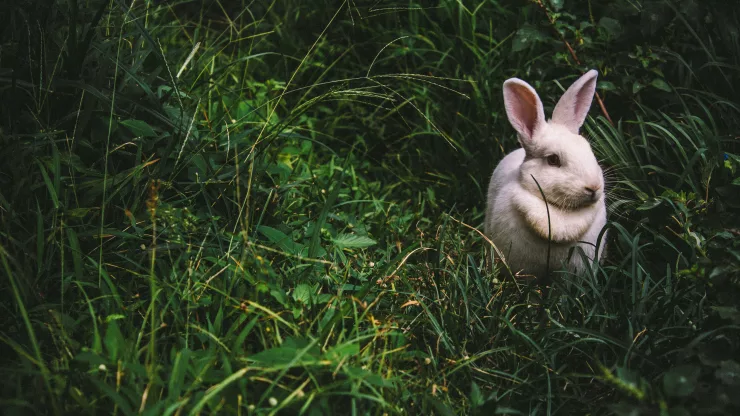Weasels are small, carnivorous mammals known for their quick movements and ferocious hunting skills.
While they are often found in rural areas, these agile creatures have also adapted to life in urban environments.
But what do urban weasels eat? Let’s take a closer look at their diet and behavior in this article.
Jump to Section
Introduction
Urbanization has led to significant changes in the diet and behavior of many animals, including weasels.
As cities continue to expand, more and more wildlife is pushed into urban areas, where they must adapt to new food sources and challenges.
Weasels are no exception, and their diet has shifted significantly in recent years.
Understanding Urban Weasels
Before we dive into the specifics of their diet, let’s take a moment to understand these fascinating creatures.
Weasels are small, slender mammals with a long, flexible body and a pointed snout.
They are excellent hunters, with sharp teeth and claws that allow them to take down prey much larger than themselves.
Weasels are also known for their agility and speed, making them elusive and challenging to catch.
What Do Urban Weasels Eat?
Weasels are primarily carnivorous, meaning they feed on meat. However, their diet can vary significantly depending on their location and availability of food sources.
In urban areas, weasels have access to a variety of different foods, including prey, vegetation, and human garbage.
A Closer Look at Their Diet
Prey
Weasels are skilled hunters and prefer to feed on small mammals such as mice, voles, and rabbits.
They are also known to eat birds and their eggs, as well as insects and reptiles. In urban areas, weasels may also hunt rats and other pests that are common in cities.
Vegetation
While weasels are primarily carnivorous, they do occasionally eat vegetation.
In urban areas, they may munch on fruits, berries, and other plants when prey is scarce.
Garbage and Other Human Foods
Weasels are opportunistic feeders and will eat almost anything if it is readily available.
In urban areas, they may scavenge for human garbage and other food left out by people.
This can include everything from discarded fast food to pet food left outside.
Factors That Affect Urban Weasels’ Diet
Several factors can affect the diet of urban weasels, including urbanization, seasonal changes, and availability of food sources.
Urbanization
As cities continue to expand, more and more wildlife is pushed into urban areas.
This can lead to a decrease in natural prey and an increase in human garbage as a food source.
Seasonal Changes
Seasonal changes can also affect the diet of urban weasels.
During the winter months, prey may be scarce, leading weasels to rely more heavily on vegetation and human garbage.
Availability of Food Sources
The availability of food sources can also impact the diet of urban weasels.
If prey is abundant, they may hunt more frequently and rely less on vegetation and human garbage.
How Do Urban Weasels Hunt?
Weasels are skilled hunters and use a variety of techniques and strategies to catch their prey.
Techniques and Strategies
Ambush Hunting
Weasels are expert ambush hunters and will often lie in wait for their prey to come to them.
They may hide in bushes or other vegetation and then pounce when their prey is within reach.
Chasing and Pursuing Prey
Weasels are also fast runners and can chase down prey on the ground.
They may pursue their prey for long distances, using their speed and agility to catch them.
Climbing and Jumping
Weasels are excellent climbers and can scale trees and other structures to catch prey. They are also skilled jumpers and can leap significant distances to catch their prey.
The Role of Urban Weasels in Urban Ecosystems
Weasels play an essential role in urban ecosystems, both as predators and prey.
Predators or Prey?
Weasels are predators and help control the populations of other animals such as rodents and pests.
However, they are also prey for larger predators such as owls and hawks.
Impact on Other Wildlife
Weasels can have a significant impact on other wildlife in urban areas. By controlling the populations of pests, they can help protect local flora and fauna.
Benefits and Drawbacks
While weasels can be beneficial in urban environments, they can also cause problems for humans.
They may prey on domestic animals such as chickens and rabbits, and occasionally enter homes in search of food.
Conclusion
Weasels are fascinating creatures that have adapted to life in urban environments.
Their diet and behavior have shifted significantly in recent years, as they have learned to take advantage of new food sources and challenges.
While they can be a nuisance for humans at times, they play an essential role in urban ecosystems and are a vital part of the food chain.
Final Thoughts on Urban Weasels’ Diet and Behavior
Overall, urban weasels are opportunistic feeders that rely on a combination of prey, vegetation, and human garbage for their diet.
They are skilled hunters that use a variety of techniques and strategies to catch their prey and play an important role in urban ecosystems.
FAQ
What is the average lifespan of an urban weasel?
The average lifespan of an urban weasel is around two to three years.
Can weasels be kept as pets?
Weasels are not recommended as pets, as they are wild animals and require specific care and attention.
Are weasels dangerous to humans?
While weasels are not typically dangerous to humans, they may bite if threatened or cornered.
It is best to avoid contact with wild weasels and give them plenty of space.
I’m a nature enthusiast and creator of Metro Wilds and have spent years exploring the great outdoors.
With a passion for environmental conservation and sustainability, I have dedicated my career to writing about the beauty and wonders of nature, as well as the threats facing our planet.
Contact me at [email protected] for assistance.





